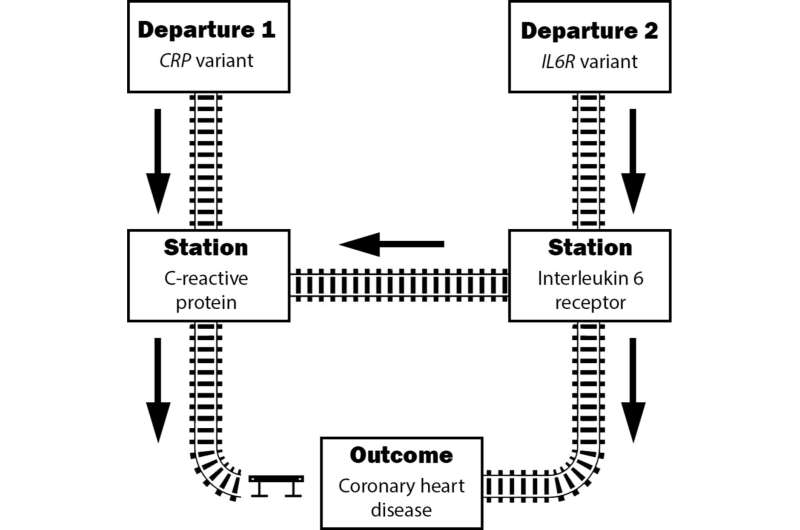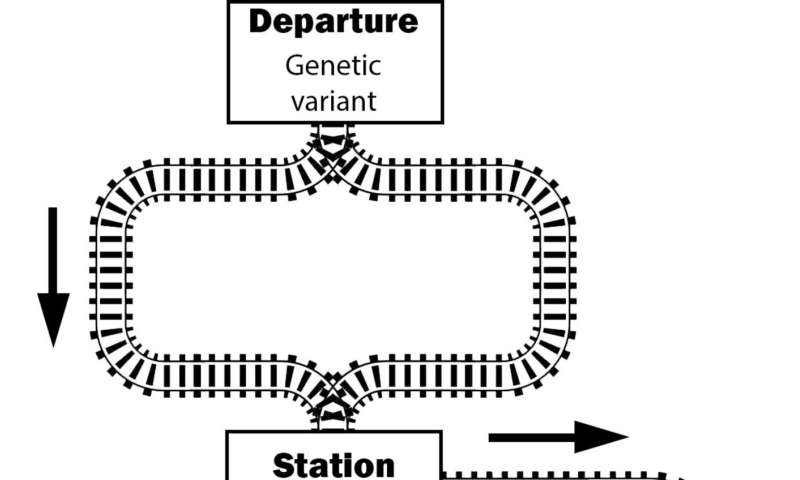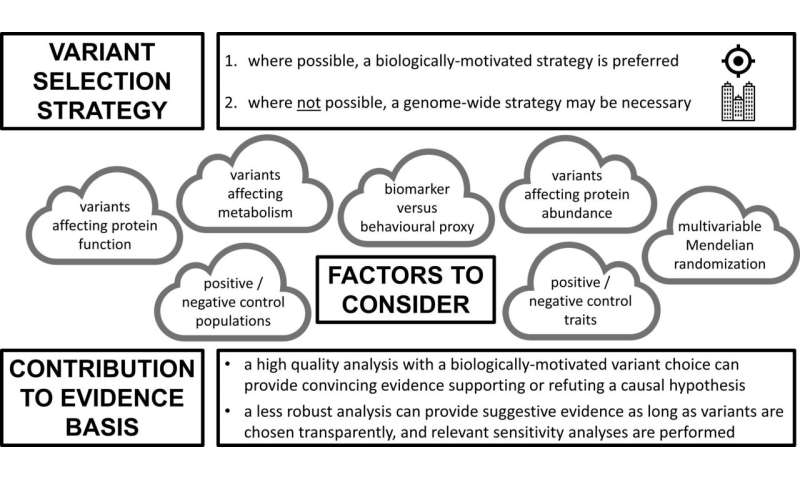This article has been reviewed according to Science X's editorial process and policies. Editors have highlighted the following attributes while ensuring the content's credibility:
fact-checked
proofread
Making sense of Mendelian randomization

Mendelian randomization, a powerful tool in medical research, helps us understand whether certain factors truly cause disease. This technique uses genetic variations as "natural experiments" to reveal cause-and-effect relationships. However, choosing the proper genetic variations is crucial for accurate results.
Think of a train network where the genetic variation is the starting point, the exposure is a station, and the disease is the destination. The train must pass through the exposure station en route to the disease. This represents the critical assumption of Mendelian randomization: the genetic variation affects the exposure, which then influences the disease.
Biologically motivated approaches are preferred for selecting these genetic variations. They focus on genes directly linked to the exposure, like using variations within a protein-coding gene to understand the protein's impact on disease. This approach is more reliable as it minimizes "off-track" influences on the disease.
Genome-wide analyses, while tempting due to their vast data, can be misleading. They often introduce noise and weaken the signal, leading to unreliable conclusions. Just like having trains going in different directions, these analyses lack the focused direction of biologically motivated approaches.
However, genome-wide analyses can still be helpful as supporting evidence. Imagine having multiple trains starting from different stations but all converging at the exposure station. If these trains consistently reach the disease destination, it strengthens the evidence for a causal link.
-

The instrument variable assumptions imply that all trains leaving the departure station (genetic variant) and arriving at the destination (outcome) must pass through the exposure station. They can take different routes, reflecting different causal pathways, and there can be some pathways from the exposure to unrelated destinations. But the exposure station must be a station stop on all routes from the variant to the outcome. Credit: Stephen Burgess and Héléne Toinét Cronjé -

Central illustration of factors influencing variant choice in Mendelian randomization. Credit: Stephen Burgess and Héléne Toinét Cronjé
The key takeaway? Prioritize biologically motivated approaches whenever possible. While not always feasible, they offer more precise insights. Genome-wide analyses can be used cautiously for additional support, but their limitations must be considered.
Combining biological understanding with statistical expertise is essential for drawing accurate causal conclusions from Mendelian randomization. This collaboration across disciplines ensures we stay on the right track in understanding the true causes of disease.
The research is published in the journal eGastroenterology.
More information: Stephen Burgess et al, Incorporating biological and clinical insights into variant choice for Mendelian randomisation: examples and principles, eGastroenterology (2024). DOI: 10.1136/egastro-2023-100042





















